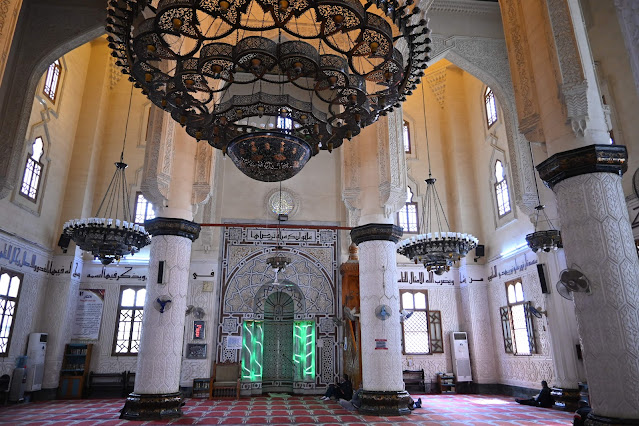Discover the hidden beauty of Sidi Yaqut Al Arsh Mosque in Alexandria. Explore its rich Sufi heritage, stunning architecture, and spiritual atmosphere. A must-visit gem in Mosque Square.
If you’re looking to explore the spiritual heart of Alexandria, a visit to Sidi Yaqut Al Arsh Mosque is a must. It offers not just a glimpse into the city’s Sufi heritage, but also a moment of serenity and beauty. Whether you’re a history buff, spiritual seeker, or a curious traveler, this hidden gem is sure to leave a lasting impression.
The Yaqut Al Arsh mosque is more than just a historical site; it’s an active spiritual hub. Pilgrims and local residents come here seeking blessings, peace, and reflection. Sidi Yaqut Al Arsh is believed to be a source of spiritual light, and many visit his mausoleum within the mosque to offer prayers. His legacy continues to inspire devotion and respect, drawing people from across Egypt and beyond.
A Brief History of Sidi Yaqut Al Arsh
Sidi Yaqut Al Arsh was a respected Sufi figure who lived during the Mamluk period. Known for his piety and spiritual wisdom, he was a disciple of Abu Abbas al-Mursi and part of the broader Shadhili Sufi order. The mosque dedicated to him was built to honor his legacy and continues to be a focal point for spiritual seekers and Sufi followers in Alexandria. Its location in the famed Mosque Square places it among other important Islamic landmarks, including the grand Abu al-Abbas al-Mursi Mosque.
Sidi Yaqut Al Arsh Mosque:
A Hidden Spiritual Gem in Alexandria Tucked away in the heart of Alexandria’s Mosque Square, the Sidi Yaqut Al Arsh Mosque is one of those places that locals cherish and travelers often overlook. This beautiful and serene mosque, named after the revered Sufi master Yaqut Al Arsh, isn’t just a place of prayer—it’s a peaceful retreat where history, spirituality, and architecture meet. With its ornate copper inscriptions, intricately designed minbar, and tranquil atmosphere, the mosque offers a glimpse into Alexandria’s deep-rooted Islamic heritage and Sufi traditions.
The Shrine of Yaqut Al-Arsh At the heart of the mosque lies a beautifully preserved shrine, believed to house the resting place of Sidi Yaqut Al Arsh. Enclosed in an elegant wooden structure with delicate carvings and sacred inscriptions, the shrine radiates peace and reverence. Many visitors pause here for reflection or to recite prayers, drawn by the spiritual presence that seems to linger in the air.
The shrine is often adorned with green cloths, symbolic of peace and paradise in Islamic tradition, and small offerings left by those seeking blessings or spiritual intercession. For many locals, this spot is a spiritual anchor—a quiet reminder of divine connection in the midst of a bustling city.








No comments:
Post a Comment